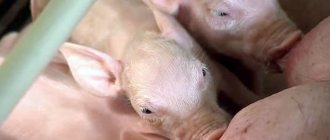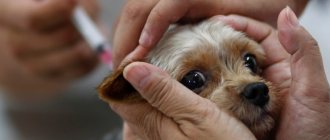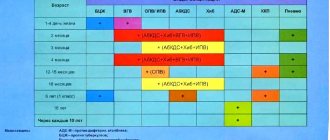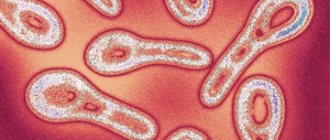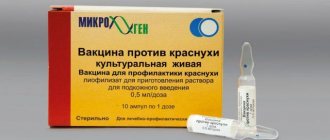On large pig farms, piglets are vaccinated in strict accordance with the recommended schedule, but owners of private farmsteads, despite considerable risks, do not always take this issue with due seriousness.
In livestock farms, piglets are vaccinated starting from the first days of their life, according to the established vaccination schedule
Today we will talk about the timing of immunization of young pigs, the vaccines that are used for this, and the basic rules for their administration.
Pig vaccination plan
It is worth noting that in the first months of a piglet’s life, the foundation for the health and productivity of an adult is laid. That is why, in addition to iron, other preventive agents are also introduced into the body. Such vaccination is carried out in accordance with a special plan, which includes the following drugs:
- Vitamin and mineral complexes. Tetravit or trivit is administered into the body as an injection with a dosage of 1 drop per individual. Tricalcium phosphate is added to food in an amount depending on the weight and age of the baby. Aminovital is added to water.
- Vaccination against salmonellosis and pasteurellosis. The procedure is carried out at the end of the first month of the piglet’s life. For this purpose, specialized vaccines are used, which are administered 2 ml twice with an interval of 5-7 days.
- Swine fever vaccine. Implemented at the age of 1.5 months. Before administration, the product is diluted with saline solution.
- Vaccine against swine erysipelas. A special preparation in liquid form is used at 2-2.5 months from the birth of the baby. The product is administered in a volume of 0.3 ml. After 2 weeks, a second injection is carried out at a dosage of 0.5 ml. If the dry vaccine VR-2 is used, then repeated administration is carried out 30 days after the first injection.
From the middle of the piglet's second month of life, it is necessary to administer antiparasitic drugs. These include the following:
- Ivermek. It is used once, based on the proportion of 1 mg of the drug for every 33 kg of animal weight. The injection is administered intramuscularly.
- Levamisole. The anthelmintic is also administered intramuscularly. The injection is carried out once at a dosage of 1 mg per 10 kg of animal weight.
- Tetramizole. The drug is available in the form of granules. The animal is fed after preliminary mixing with food. The dosage is 0.75 g per 10 kg of weight.
Daily iron requirement for piglets: feeding features
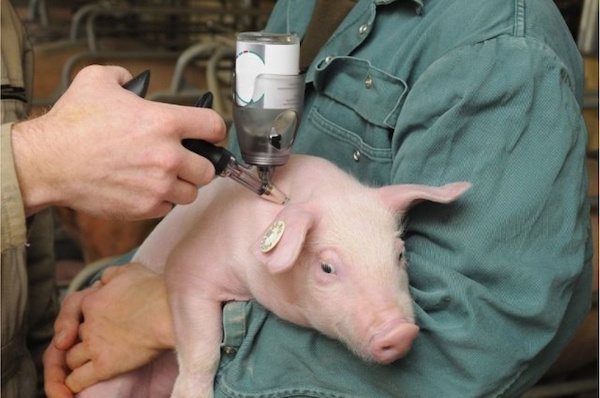
The level of iron is influenced by the diet of a pregnant or lactating sow, and as a result, is reflected in the daily iron requirement of piglets.
When intensively fattening pigs on an industrial scale, to increase profitability, cheaper starter feed containing protein of plant origin is often used. It contains enough iron, but it is absorbed worse than, for example, protein from chicken bone meal: in soy flour the iron content is 2.5-4.5 times lower than in bone meal.
In addition, plant food contains phytic acid, which reduces the absorption of iron, phosphorus, calcium, magnesium and other vital microelements by up to 30%. To absorb iron from plant food (increasing the bioavailability of the microelement), it becomes necessary to introduce phytase, an enzyme that neutralizes the effect of phytic acid, along with gastric juice.
In adult domestic pigs that have been consuming starter feed based on vegetable protein for a long time, the body adapts to the breakdown of phytates. Therefore, they do not have problems with the absorption of iron and other microelements. On the contrary, the remnants of unsplit phytic acid molecules have a positive effect on the structure of bone tissue.
The gastric juice of newborn piglets does not contain hydrochloric acid during the first 3 weeks of life. That is, the minimum iron that they receive from mother’s milk satisfies the body’s needs by 15-20%. Piglets have no other source of iron other than milk.
In addition, each piglet receives only 1 mg of iron per feeding. To get the daily requirement of 7-8 mg, a piglet weighing 1.5-2 kg needs to suck 7-8 liters of milk daily, which is hard to imagine.
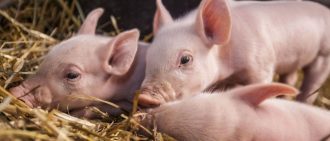
Do-it-yourself castration of piglets: preparation, stages of the operation and care
It is impossible to increase the iron content in a sow’s milk in such a volume at once, because an excess of the microelement, like a deficiency, has an extremely adverse effect on the body.
Wild pigs meet their micronutrient needs by obtaining them from the soil. The growth of muscle mass and blood vessels in wild animals occurs naturally, without additional stimulation, and they have enough minerals obtained in nature.
For domestic pigs, walking is an additional source of infection, to which they are no longer adapted, and intensive weight gain does not correspond to the level of natural replenishment of iron reserves.
These features, in fact, lie in the need for iron for piglets.
Vaccination schedule
As we said above, you can only obtain a vaccination schedule for your herd by consulting a veterinarian. Only a competent specialist can draw up an adequate vaccination schedule, taking into account all the characteristics of your herd. However, before you go to him, you can still study the vaccination schedule presented in the table.
Table 1. Vaccination and administration of other injections to piglets from birth at home
| Age | Description of injection |
| 1-2 days after birth | Preparations containing iron |
| 20 days of life of piglets | Vaccination against infectious diseases such as: salmonellosis; hemorrhagic septicemia; echinococcosis. |
| 1.5 months from birth of piglets | Vaccination against swine fever |
| 2 months from birth of piglets | Vaccination against erysipelas in pigs |
| 3 months from the birth of piglets | Repeated vaccination of piglets against infectious diseases such as: salmonellosis; hemorrhagic septicemia; echinococcosis. |
| 4 months of life of piglets | Repeated administration of the erysipelas vaccine. |
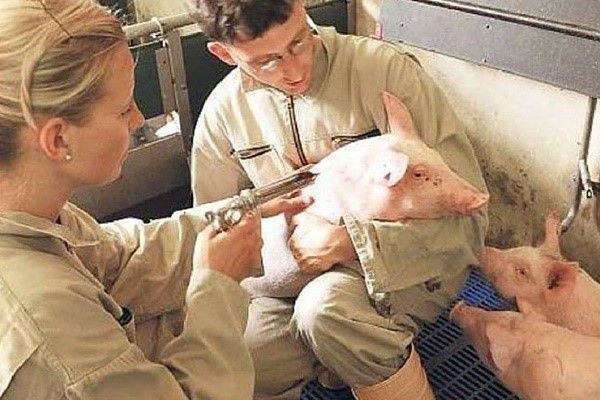
How and when to vaccinate will be determined not only by the age, weight and health of the pig, but also by many other factors.
Provided that you did not raise the piglets yourself, but bought them from another farmer, and you were not given certificates of vaccination of the individuals, this means that the piglets were not vaccinated. Therefore, you will need to do this:
- relocate the purchased individuals to quarantine, which will last for a month;
- provided that no diseases are detected, treat the piglets for helminths;
- then administer the vaccines.
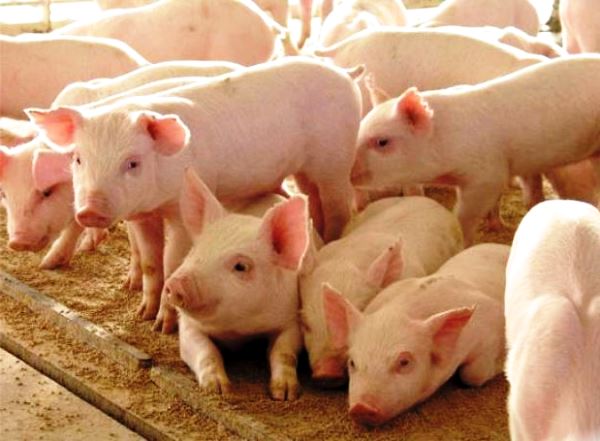
Piglets need anthelmintic treatment
As we have already said, it is not necessary for a veterinarian to give injections to animals, therefore, you should learn to carry out this procedure yourself. We'll see how to do it correctly in the next section.
Prevention of foot and mouth disease, encephalitis, leptospirosis
At two months, piglets are vaccinated against encephalitis (Teschen disease). Given that this injection is not included in the general vaccination scheme, farmers must decide whether their pigs need an injection. If necessary, children are vaccinated against encephalitis once. The injection is given intramuscularly.
Individuals from one month to three years are susceptible to the infectious disease. If an animal contracts encephalitis, the disease invariably ends in death.
The same applies to vaccination of pigs against foot and mouth disease. The injection is not included in the standard immunization regimen. The injection is given to a piglet at the age of 2–2.5 months. Immunolactan is used in a volume of 0.4 mg up to 90 days of age. Senior pigs require 0.1 mg per kilogram of live weight. Approximate vaccination schedule for piglets, table:
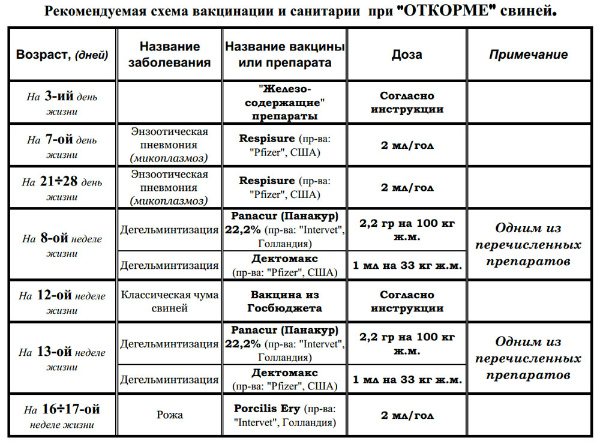
What vaccinations are required?
From about the tenth day of life, piglets are considered strong enough for more serious and important vaccinations. What vaccinations are mandatory for piglets are indicated below. However, first of all, it is worth noting that if the breeder does not have papers stating that he has carried out all these vaccinations on the animals, he will not be able to legally sell meat and lard.
Among all the vaccinations given to piglets, this is one of the most important!
- Vaccination against rickets is given at the age of 10 days. Potassium and calcium are injected into piglets, but this is only partial prevention. In addition, each pig is fed with chalk and fish oil. They can be added to the feed or simply dripped into the mouth of young animals. It is also possible, but not necessary, to give Tetravit vitamins to pigs to improve immunity.
- Piglets are vaccinated against salmonellosis, streptococcosis and pasteurellosis from the 20th day of life. For vaccinations, the drugs SPS and PPd are used. SPS is administered 2 ml intramuscularly twice with a break of a week. Then the procedure is repeated on day 27, only 4 ml of the drug is taken, not 2 ml. PPD is administered 3-4 mm per piglet twice – on the 20th day and on the 27th day.
- They are vaccinated against plague when the pigs are 40-45 days old. The drug, which is usually brought by the veterinarian himself, is diluted in 0.9% saline and administered intramuscularly. Revaccination occurs at 85-100 days of life.
- On the 45th day, pigs can be vaccinated against leptospirosis. It is done in 2 steps. The first vaccination is carried out on the 45th day, the second exactly 1 week later. The drug for the disease is called VGNKI, but there are many variations of it, it’s just that this one is used most often and has a reasonable price.
- Vaccination against erysipelas is carried out on the 60-70th day. This disease is not only dangerous for pigs, but also painful. Among all the vaccinations given to piglets, this is one of the most important! The vaccine is always produced in dry form. It is diluted in saline and injected behind the ear of piglets. The first vaccination is carried out on the 60th day, the pigs are injected with 0.5 ml, another month later (on the 90th day) a second injection of 1 ml should be given. The third vaccination is carried out at 7 months (210-214 days). Each pig is injected with 1 ml of the drug behind the ear.
Is it possible to vaccinate piglets yourself?
Some breeders find it very difficult, for financial or other reasons, to call a veterinarian to vaccinate their gilts. Knowing which vaccinations are given to piglets at home, and which require the mandatory presence of a veterinarian, you can make your life much easier.
Approximate composition of a home veterinary first aid kit for pigs
Of the above vaccinations, iron injections, vaccines against leptospirosis, salmonellosis, rickets, piglets can be given at home. But they need to be done correctly, with the exact dosage, in the right place, and not wherever you want. Otherwise, the injection may not work or lead to disastrous consequences.
It is important to note that pigs often have a negative reaction to a particular drug. This can be expressed in shortness of breath, the appearance of allergic spots, etc. If the breeder vaccinates himself, then most likely he will not be able to cope with the consequences. Therefore, it is important to at least have the veterinarian’s phone number ready and carry out vaccinations in the morning, when all the necessary authorities are working.
Vaccination rules
Pigs must be vaccinated against erysipelas, colibacillosis, salmonellosis, plague, pasteurellosis, streptococcosis. Additionally, to strengthen the immune potential, animals are given injections of mineral and vitamin preparations. Also, newborn piglets need to be injected with iron (iron complexes).
It is very important to observe and adhere to the schedule of preventive vaccinations and revaccinations established by a veterinarian. Veterinarians will make it easier for farmers to carry out the vaccination plan at home, determine what vaccinations animals need, and how to give an injection to a small piglet yourself
Preventive immunization is a mandatory procedure for piglets, which will allow you to raise a strong, healthy pig population
Timely vaccination will prevent small piglets from becoming infected with various deadly infections. The vaccination plan is standard for pigs, regardless of their breed. Farmers should consult a veterinarian to apply a vaccination schedule for newborn piglets at home. A specialist will determine what vaccinations pigs need
Preventive immunization is a mandatory procedure for piglets, which will allow you to raise a strong, healthy pig population. Timely vaccination will prevent small piglets from becoming infected with various deadly infections. The vaccination plan is standard for pigs, regardless of their breed. Farmers should consult a veterinarian to apply a vaccination schedule for newborn piglets at home. The specialist will determine what vaccinations the pigs need.
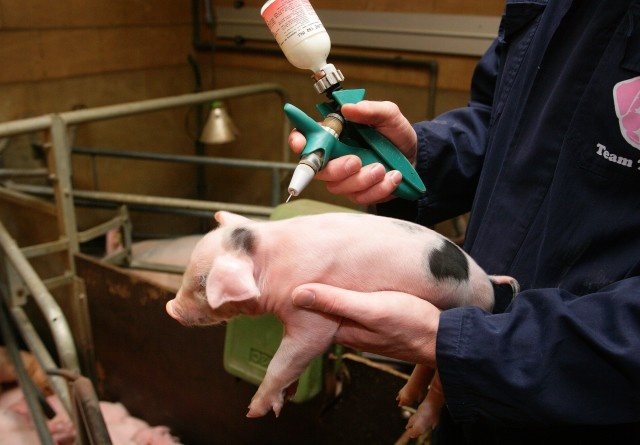
When vaccinating small pigs, you need to take into account the breed and weight of the piglet. For example, the Vietnamese breed requires a lower dose of vaccine than regular white pigs. Vaccinations are given to Vietnamese piglets from birth only to prevent anemia and replenish the necessary vitamins in their bodies. Only clinically healthy piglets are vaccinated. The first vaccination is given at three days of age to prevent the development of anemia. Use a 2 ml solution of Ferranimal, Ferroglucan iron. The injection is given intramuscularly behind the ear. Piglets are vaccinated for three days. They give one injection per day. Vaccination is best done in the morning.
Anemia caused by a lack of iron in the body is treated by adding a solution of 15 g of iron sulfate and 1.5 g of copper sulfate to the daily diet of small animals. The solution is diluted in warm water. Iron is given to piglets one teaspoon in the first 18–20 days.
To prevent the development of rickets in babies, preventive vaccination with calcium and potassium preparations is carried out on the tenth day of life. Additionally, pigs can be given Tetravit, Trivit, other complex vitamin preparations, and oil solutions of vitamins. One drop per day per pig is enough.
For lactating sows, tricalcium phosphate and water-soluble vitamins are added to the feed. In drinking water - Chiktonik, Aminovital and Multivit.
In the first month of life, piglets, starting from 20 days of age, are comprehensively immunized against salmonellosis, streptococcosis, and pasteurellosis. These are the most dangerous infections for young animals, which can cause the death of the entire livestock. For vaccination, injection solutions of PPd and SPS are used. The first drug is administered at the rate of 3–4 ml per head. A week later - a second injection of 4 ml. The second drug is administered intramuscularly at a dose of 2 ml.
Vaccinating animals against plague
The most common and deadly disease is plague. This infection is caused by a virus that can infect up to 95% of unvaccinated piglets. It poses a great danger to pigs and wild boars. Death can be prevented through vaccination. Vaccination of young animals is carried out after 40 days, and after 90-100 days of life, revaccination is done. This procedure must be performed annually.
One of the following drugs is used for vaccination:
- VGNKI virus vaccine;
- "KS";
- "ABC";
- Virus vaccine LK-VNIIVViM.
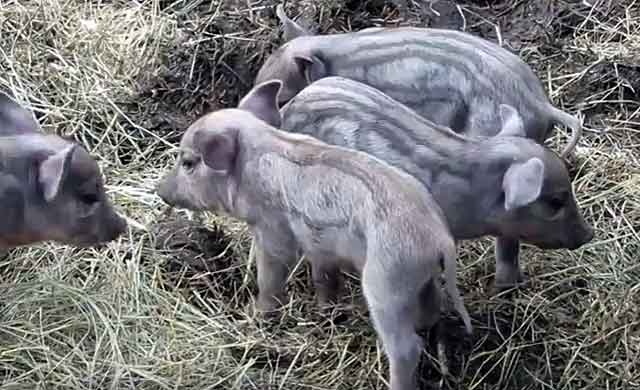
For piglets, use 2 ml of a solution of non-concentrated vaccine "KS". The animal must be injected intramuscularly into the inner thigh or lower third of the neck. To immunize young animals in pig farming, the dry avirulent lipinized vaccine “ABC” is used.
In case of an outbreak of infection, it is necessary to additionally vaccinate each pig with a concentrated solution of “KS”, not taking into account the previous vaccination.
Vaccinations after farrowing
Immediately after birth, no injections can be given; the body of little pigs is still too weak. Vaccination is allowed only on days 3-4. There is a mandatory list of vaccinations that must be given to all newborn pigs.
For anemia
The disease is caused by a lack of iron in the body, so iron-containing drugs are used for prevention:
- Ferranimal;
- Feroglyukin.
When 3 days have passed since birth, each pig is given 2 ml of suspension behind the ear. Injections are given 3 days in a row, preferably in the morning. Repeated administration is prescribed on days 10-14 and a week before the piglet is weaned. The dosage for Vietnamese piglets is lower than for ordinary white piglets and is 1.5 ml of solution per head.
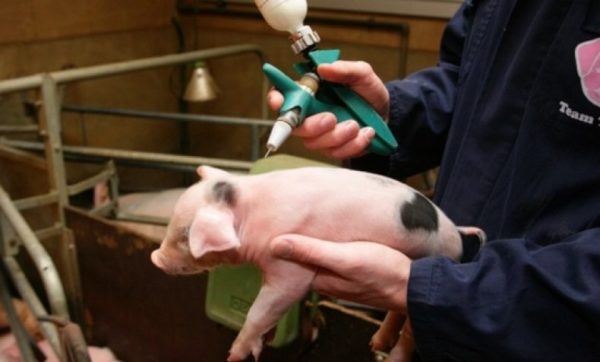
First vaccination of a 3 week old piglet.
Additionally, the diet of young pigs is enriched with a solution of iron sulfate (15 g) and copper sulfate (1.5 g). They are bred in warm water and given to the piglet 1 tsp. per day for 3 weeks.
Each individual is given a suspension individually. If you add the drug to the drinker, there is a high probability that one pig will receive too much iron, while the other will not touch the water at all.
Against rickets
The disease develops slowly. The young animals are stunted in growth, begin to chew on the walls, the feeder, then bowed legs and lameness appear. For prevention, piglets are given calcium and potassium supplements on the 10th day of life. Additionally, they are given vitamin complexes and fish oil. Weanlings are fed hydrolyzed whey 2 ml per day. The food is enriched with crushed chalk, shells, and limestone.
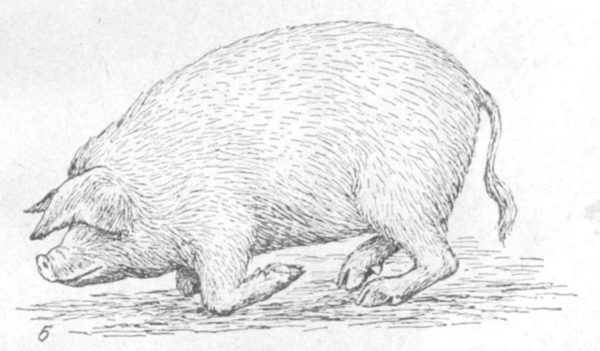
Rickets is dangerous for both piglets and adult pigs.
An additional preventive measure against rickets is irradiation of pigs with a quartz lamp. The procedure is carried out 7-10 times every other day.
Complex vaccines
These vaccines are designed to protect livestock against several diseases at once. They are used in large farms with large livestock and in unfavorable epidemiological conditions.
The following drugs are recommended:
- PPP vaccine. It is administered intramuscularly behind the ear in a dose of 2 cc. see. Repeat the injection after 8-10 days. Immunity to these diseases is formed 12 days after the second vaccination and lasts up to 5 months.
- VERRES-SPS(). It is administered in a dose of 2 cc. cm twice with a 10-day interval.
- If the situation on the farm is unfavorable for salmonellosis, enterococcal infection and pasteurellosis, a complex PPD vaccine is used. It is administered to piglets 20-30 days after birth and to pregnant sows 15-30 days before farrowing. Pigs need to be given PPD intramuscularly on the back of the thigh.
Injections are given to young animals 2 times with an interval of 7 days. The dosage for the first vaccination is 3 cc. cm, for the second - 5 cubic meters. cm.
Scheme of administration of PPD for pregnant sows:
- 40 days before farrowing – 5 cubes of solution;
- 30 days before farrowing – 10 cubes;
- 20 days – 10 cubes.
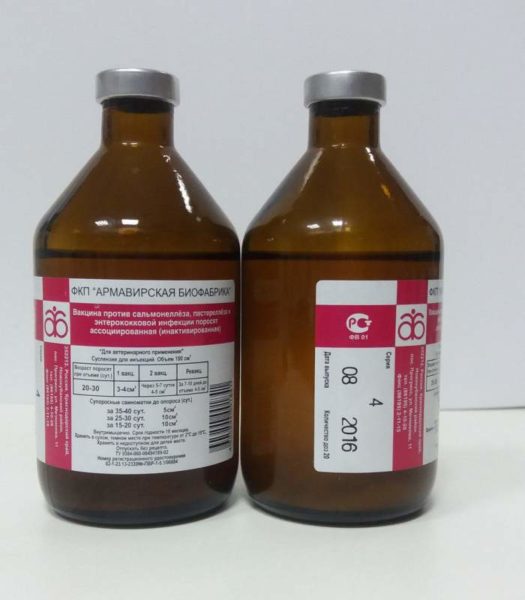
Some individuals experience a local and general reaction after administration of a complex vaccine. Local – in the form of a swelling on the skin. The general reaction is expressed by an increase in temperature, general depression, and refusal to eat. These symptoms are short-lived and disappear within 1-2 days.
Vaccination against plague
Classical plague is a dangerous disease caused by a virus. Transmission occurs from one pig to another. Manifested by fever, damage to blood vessels and intestines. The plague causes great damage to the farmstead, since sick animals are not treated. They either die on their own or are slaughtered for meat.
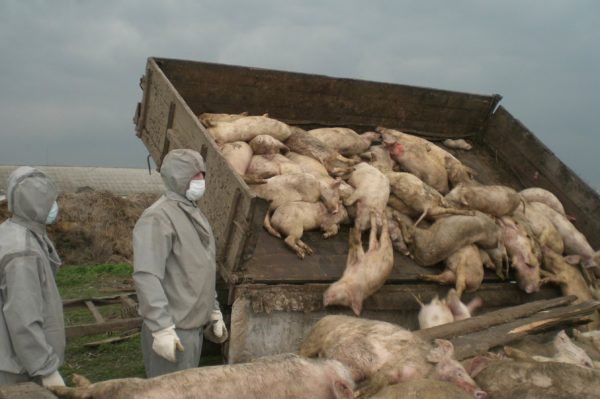
Destruction of carcasses of swine fever infected.
The infection is transmitted through contaminated food, water, and manure. To prevent an epidemic among livestock, it is necessary to vaccinate against plague. The following vaccines are used:
- DIA;
- VNIIVViM;
- KS;
- SUIMUN KCHS.
Before purchasing, it is better to ask your veterinarian which vaccine will be more effective for your region. The vaccination is done on the 45th day and 120th day from birth. Immunity in pigs begins to develop within a week after vaccination.
This is the entire list of mandatory vaccinations for newborn piglets. However, vaccination does not end there. It is better to discuss the further vaccination schedule with your veterinarian.
Iron injections
To prevent anemia, piglets need to be injected with iron-containing drugs:
- "Suiferrovit";
- "Ferranimal";
- "Ursoferran";
- "Ferroglucin".
Any iron supplement for piglets is administered at the rate of 200 mg of pure substance per head.
It is worth mentioning the new drug “Sedimin”, which contains iron in an easily digestible form (18–20 mg per 1 ml) and a complex of microelements. It is injected intramuscularly on the 3rd–4th day of a piglet’s life at the rate of 2.0 ml per head. The injection is repeated on days 10–14, the drug is administered a third time before weaning 7–10 days in a dose of 3–5 ml per head.
There is also “Sedimin-Fe+” with a high iron content - 50 mg/ml.
How to inject iron into Vietnamese piglets? — here the doses need to be reduced according to the weight of the animal. On average, the amount of the drug is reduced by 25%, that is, instead of 2 ml, the piglet is given 1.5 ml.
Vaccination against erysipelas
At 60-70 days (or two months and a week), piglets are vaccinated against erysipelas. This is a skin disease that causes great discomfort and suffering to animals. The vaccine is available in dry form, which must be diluted in saline according to the instructions and injected into the piglets in liquid form behind the ear. The first dose of 0.5 ml is given at 2 months, then a month later a second injection of the vaccine is given with a dosage of 1 ml. The last revaccination is done after 5 months in an amount of 1 ml.
As a result, the piglet must receive three vaccinations against erysipelas - at two months, at three and at seven months. If at the time of the first vaccination against erysipelas the pig was more than 4 months old, then it is injected with 1 ml of vaccine, and a second injection is given after 5 months with an amount of 1 ml.
The video below demonstrates what complications can arise in pigs after an injection against a disease such as erysipelas. Practical advice from a veterinarian and farmer will tell you how not to be afraid of such consequences and eliminate them at home.
Vaccinations for pigs against erysipelas
Erysipelas is a dermatological disease that brings a lot of suffering to small piglets, therefore, to protect babies who have reached 2 months of age, polyvalent or monovalent vaccines are used.
As a rule, anti-erysipelas drugs are available in the form of dry powders. They are diluted with saline solution. The injection is given intramuscularly behind the ear. The vaccination course takes place in three stages. The first injection is calculated at 0.5 ml. Revaccination of babies is carried out after 30 days in a double dosage (1 ml). The third injection should be given at seven months.
Piglets are given an aluminum hydroxide or deposited vaccine against erysipelas.
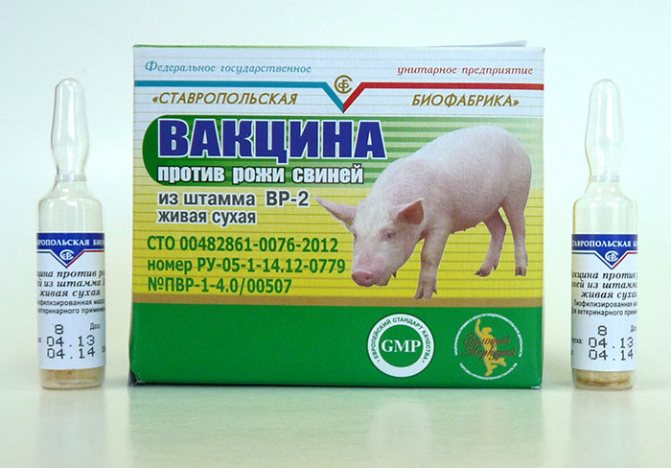
Erysipelas vaccine for pigs and piglets
When it is impossible to inject a piglet behind the ear, the injection drug is injected intramuscularly into the inner thigh of the hind leg, where there is sufficient muscle tissue. Piglets tolerate immunization quite calmly, but it is better to enlist the help of an assistant.
Enzyme growth stimulants, phosphatides for pigs
Phosphatides are substances containing phosphorus. They are obtained by refining vegetable oils. Phosphatides include a polyhydric alcohol, fatty acids, phosphoric acid and a nitrogenous base.
Phosphatides must be diluted with hot boiled water and mixed in the proportion of 1 g of the drug per 1 kg of weight of a pig under four months of age and 0.8 g of phosphatides per 1 kg of weight of a pig over four months old. These substances are used to accelerate the growth of the animal and are given to young pigs.
Enzyme stimulants are substances of organic origin. They are made from healthy animal organs - liver, kidneys, testicles, pancreas, spleen. Stimulants are administered subcutaneously to animals in the following dosages:
- piglets – 1–2 ml;
- adult pigs – 5 ml;
- gilts – 3 ml.
Enzyme stimulants are injected into pigs throughout their lives every ten days. Injections are stopped ten days before slaughter.
Vaccination of sows
Without timely scheduled vaccinations, the management of each pig farm will not be sufficiently effective. 10 days before insemination, the female should be injected with the drug “Ivermec”. This remedy is used against lice, worms, and subcutaneous gadflies. This drug is also used for preventive measures against certain skin diseases.
Sows are vaccinated against erysipelas every 6 months and given a distemper vaccine once a year. For females, you can add vitamin preparations “Imultivit”, “Aminovital”, “Chiktonik” to the daily diet. If you are interested in information about beneficial microelements for animals, be sure to read the article “About vitamins for pigs and piglets.”

Pregnant sows must be vaccinated against salmonellosis 45 days before the expected birth and, after 10 days, re-immunized. 30 days before farrowing, a pregnant female needs to be injected with a vaccine against pig erysipelas. For high-quality colostral immunity in piglets, sows are given an inactivated vaccine twice 21 and 17 days before the end of gestation.
After farrowing, the animal is not given any vaccinations.
To create conditions under which piglets are less susceptible to viral diseases, farmers need to ensure optimal cleanliness and temperature conditions in the room, as well as proper ventilation.
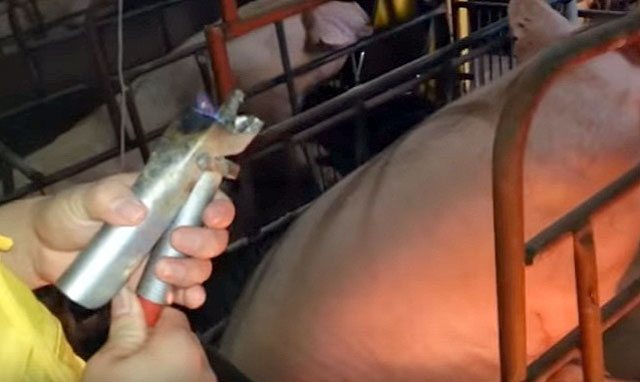
Please give this a like and maybe it will help prevent some piglet from getting sick.
Vaccination of one-month-old piglets
Most vaccinations are given to piglets before they are one month old. However, there are also those that need to be put after. These include medications against:
- leptospirosis;
- foot and mouth disease;
- encephalitis;
- aueski;
- faces.
Prevention of leptospirosis
Leptospirosis is an infectious disease that is transmitted by airborne droplets
It is very dangerous for pigs, which is why it is so important to carry out timely prevention, which involves the administration of the drug VGNKI
Piglets are vaccinated at 1.5 months of age. The drug is re-administered exactly after 7 days
It is very important to maintain a certain interval between injections. If you do not revaccinate, the effect of the first injection may disappear.
Prevention of erysipelas
Between 60 and 70 days they give an injection for erysipelas. This skin disease causes a lot of inconvenience to animals. Dry erysipelas vaccine is available in powder form. Accordingly, it needs to be diluted. Water cannot be used for dilution; only saline solution is permissible. Dilute the medicine according to the instructions, after which an injection is given behind the ear.
You need to repeat the injection against erysipelas 2 more times. 1 ml of vaccine is administered 1 month after the first vaccination. After another 5 months, the injection is given again (1 ml).
Prevention against encephalitis
Encephalitis is a dangerous disease that in most cases leads to the death of piglets. Only small pigs aged from 1 month to 3 years get sick. If we talk about the list of mandatory injections, then an injection for encephalitis or, as it is also called, Teschen’s disease is not one of them. Each farmer must decide for himself how important this procedure is. But experts recommend playing it safe and vaccinating young animals. Pigs are vaccinated at 2 months of age. There is no need to re-inject.
Prevention of Aujeszky's disease
Aujeszky is a disease unique to pigs. It affects the central nervous system of animals. The list of mandatory vaccinations does not include an injection against Aujesca. But in order to protect young and adult artiodactyls, it is advisable to vaccinate them with a special drug at 2 weeks of age. The injection is given again after 20 days. For vaccination, a dry culture virus vaccine is used.
It is important to know that the disease is extremely difficult to treat. Probability of death exceeds 90%
Prevention of Foot and Mouth Disease
Another injection that is not on the standard schedule is an injection against Foot and Mouth Disease. This injection is not included in the list of mandatory ones, due to the fact that the disease is quite rare. However, if pigs get sick, it is quite difficult to cure them. In addition, the disease is severe.
Young animals need to be pricked at 90 days of age. The dose of the medicine is calculated based on the weight of the animal.
We have not listed all the diseases, focusing only on the most dangerous ones. But recently, farmers are increasingly faced with circovirus infection, so it would not be a bad idea to vaccinate against it.
How to inject iron into piglets
Violation of the injection conditions leads to stress in the animal and affects the further growth of the piglet. Careless handling can injure the baby, and there is also a risk of infection. 6 steps for proper vaccination:
- Before administering the medicine, prepare a separate clean room into which the young animals are placed.
- Carefully remove the syringe from the package and draw up the drug.
- A piglet is selected from the total mass. Injections are placed in the place indicated in the instructions for use of the drug. The injection area is treated with an antiseptic.
- Most often the injection is given in the leg. To carry out the procedure, it is lifted and slightly pulled to the side, holding in this position until the product is injected. The main thing is not to harm the piglet.
- Using your holding hand to the side, lightly pull the skin to expose the muscle. The needle is inserted at an angle of 45˚, and the drug is injected.
- After the injection, the skin is returned back; for better absorption of the medicine, the injection site is lightly pressed.

To avoid confusion, the vaccinated piglet is marked or placed in a separate pen. After 2-3 injections, the syringe is disinfected with medical alcohol.
